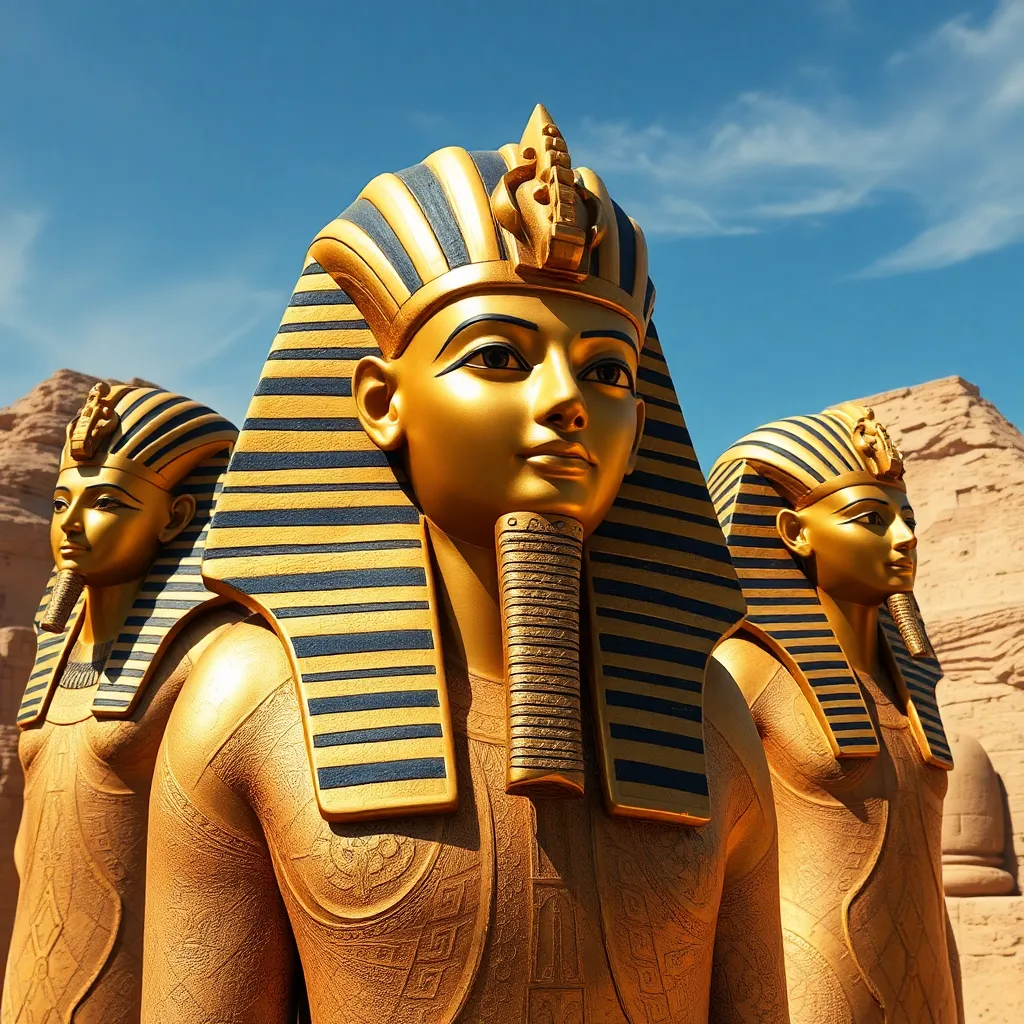The Pharaohs: Their Power, Their Legacies, and Their Artistic Influence
I. Introduction
The term “Pharaoh” refers to the ancient rulers of Egypt, who held ultimate authority over the land and its people. These leaders were not only political figures but were also regarded as divine intermediaries between the gods and the Egyptian populace. The Pharaohs played a crucial role in shaping the cultural, religious, and political landscape of ancient Egypt, creating a legacy that has endured for millennia.
The significance of the Pharaohs lies in their unparalleled power and influence, which helped to establish one of the most remarkable civilizations in history. They were central to the creation of monumental architecture, complex religious practices, and a rich artistic tradition that continues to fascinate modern society. This article aims to explore the rise of the Pharaohs, their political power, artistic contributions, and the legacies they left behind.
II. The Rise of the Pharaohs
The rise of the Pharaohs can be traced back to the early days of Egyptian civilization, around 3100 BCE. During this time, Egypt was divided into two regions: Upper Egypt in the south and Lower Egypt in the north.
Key milestones in the rise of the Pharaohs include:
- Historical context: Early Egyptian civilization was characterized by agriculture, trade, and the development of writing, which laid the groundwork for centralized governance.
- Unification of Upper and Lower Egypt: Around 3100 BCE, King Narmer (also known as Menes) is credited with uniting the two regions, symbolizing the birth of a unified Egypt and the establishment of the Pharaoh as the supreme ruler.
- Divine ruler: The Pharaoh was seen not just as a king but as a god on earth, believed to be the incarnation of the god Horus, which justified their absolute authority.
III. The Political Power of the Pharaohs
The Pharaohs wielded immense political power, supported by a complex administrative structure and a strong military.
Key aspects of their political power include:
- Governance: The Pharaohs established a bureaucracy that included governors, tax collectors, and officials responsible for law and order, resource management, and public works.
- Military conquests: Pharaohs often expanded their territory through military campaigns, securing resources and trade routes. Notable military leaders like Ramses II are remembered for their conquests.
- Religion: The intertwining of religion and politics legitimized the power of the Pharaohs. They were seen as the guardians of Ma’at (truth and order) and were responsible for maintaining harmony in the universe.
IV. The Pharaohs and Their Dynasties
Egyptian history is marked by a succession of dynasties, each contributing to the overall legacy of the Pharaohs.
Notable dynasties include:
- Old Kingdom: Known for the construction of the pyramids, such as the Great Pyramid of Giza, and the establishment of the Pharaoh as a central figure in society.
- Middle Kingdom: A period of stability and cultural flourishing, marked by literature and art, as well as significant developments in trade.
- New Kingdom: The height of Egyptian power, featuring powerful rulers like Hatshepsut, Akhenaten, and Ramses II, who expanded Egypt’s influence and built magnificent temples.
Succession crises often led to power struggles, highlighting the fragility of dynastic power and the importance of maintaining a stable lineage.
V. The Pharaohs’ Architectural Achievements
The architectural achievements of the Pharaohs stand as a testament to their power and vision.
Key accomplishments include:
- Monumental structures: The construction of the pyramids, temples, and obelisks, which served both religious and political functions. The Great Pyramid of Giza remains one of the Seven Wonders of the Ancient World.
- Engineering innovations: The use of advanced techniques in stone cutting and transportation allowed for the construction of massive structures that utilized precise alignments with celestial events.
- Symbolism: Architectural designs often contained symbolic elements that reflected the Pharaoh’s divine power and the importance of the afterlife, with temples constructed as gateways to the heavens.
VI. Artistic Expression Under Pharaohs
Art flourished under the rule of the Pharaohs, serving both decorative and propagandistic purposes.
Key aspects of artistic expression include:
- Art forms: Sculpture, painting, and hieroglyphics were prominent, with artists trained in workshops creating works that adhered to strict conventions.
- Themes: Common subjects included depictions of the Pharaoh, gods, and scenes of daily life, often imbued with religious significance.
- Political propaganda: Art was used to reinforce the power of the Pharaoh, portraying them as divine and benevolent rulers chosen by the gods.
VII. The Legacies of the Pharaohs
The legacies of the Pharaohs extend far beyond their reigns, influencing countless civilizations and enduring through time.
Key aspects of their legacies include:
- Cultural influences: The art, architecture, and religious practices of ancient Egypt have left an indelible mark on subsequent civilizations, particularly in the Mediterranean world.
- Contributions to science: The Egyptians made significant advancements in mathematics, medicine, and astronomy, which have informed modern practices.
- Modern representations: Today, the Pharaohs continue to captivate the imagination of people worldwide, often portrayed in films, literature, and popular culture.
VIII. Conclusion
In summary, the Pharaohs represent a pivotal chapter in human history, embodying the complexity of power, culture, and artistry in ancient Egypt. Their influence continues to resonate today, reminding us of the achievements of one of the world’s earliest civilizations.
The enduring impact of the Pharaohs on art and culture underscores the importance of studying their legacies. As we delve into their history, we gain insights into not only the past but also the foundations upon which modern societies are built.




